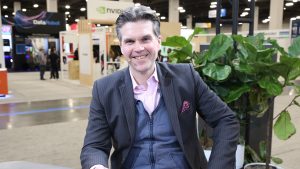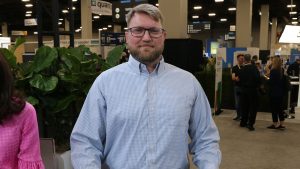Cisco takes on the Internet of Things with “fog computing”
![]() At last week’s DistribuTECH summit in San Antonio, Cisco revealed what its Internet of Things division has been up to since forming in October. The routing kingpin introduced a distributed computing architecture called IOx that combines its Internetworking Operating System (IOS) with Linux to simplify how data from connected devices is stored and managed.
At last week’s DistribuTECH summit in San Antonio, Cisco revealed what its Internet of Things division has been up to since forming in October. The routing kingpin introduced a distributed computing architecture called IOx that combines its Internetworking Operating System (IOS) with Linux to simplify how data from connected devices is stored and managed.
By hosting services at the network edge or directly in the end point rather than at a remote server, the platform reduces latency and enables applications to make better use of real time information such as geolocation data in order to improve user experience. Cisco also claims that this is so-called “fog computing” model supports a wide range of devices, which users allows to scale their environments without worrying about connectivity constraints.
“Cisco is very excited to accelerate innovation in the Internet of Things by delivering IOx, which provides the ability to combine computation and communication on our ruggedized routers and other devices,” said Guido Jouret, the general manager of Cisco’s Internet of Things group. “We believe that this turns the network into the fourth platform for computing (in addition to PCs, mobile and cloud), which will unleash new applications in manufacturing, transportation, smart cities and many other industries.”
Cisco hopes that in addition to reducing data movement overhead, fog computing will encourage developers to develop industry-specific applications and interfaces for the utilities, manufacturing and transportation sectors, historically slow-moving segments that are now at the forefront of the Internet of Things. The networking giant sees the emergence of local energy load balancing apps that automatically switch power sources based on demand and cost; smart streetlights with onboard video analytics and self-maintaining trains with embedded sensors.
The goals around data movement aren’t so different from what GE has in mind for the Industrial Internet. “Customers want more than just reliability of the machine, they want the ability to take the machine data and run their business better,” GE CMO Beth Comstock told us in an interview at the company’s Industrial Internet event last year. “The ability to take that data and do more with it creates new business models. It’s not enough to say, ‘okay, this jet engine isn’t gonna break down,’ but now we want to say ‘tell us when it needs to come in for repair early,’ or maybe it doesn’t need to come in to repair. That becomes a new service offering.”
A message from John Furrier, co-founder of SiliconANGLE:
Your vote of support is important to us and it helps us keep the content FREE.
One click below supports our mission to provide free, deep, and relevant content.
Join our community on YouTube
Join the community that includes more than 15,000 #CubeAlumni experts, including Amazon.com CEO Andy Jassy, Dell Technologies founder and CEO Michael Dell, Intel CEO Pat Gelsinger, and many more luminaries and experts.
THANK YOU













